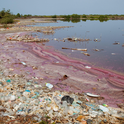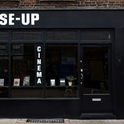Should Fabergé’s Imperial Easter eggs be sanctioned? The Victoria and Albert Museum’s blockbuster Fabergé in London exhibition closes on Sunday. The exhibition’s emphasis is on the objet d’art the Russian jeweller sold to the British Royal Family and aristocracy early last century; while all were manufactured in imperial Russia, it includes jewelled figures of distinctly British subjects such as a Chelsea Pensioner, John Bull, Edward VII’s Norfolk terrier “Caesar” and a Norfolk Black turkey. Carl Fabergé’s company had a permanent presence in London from 1906 to 1917, with a shop for his high-class bling at 173 Bond Street from 1911 to the First World War.
If the Russian firm’s output is too much for one’s tastes before going to the V&A show—it is for me—a walk round the exhibition and seeing it en masse will only reinforce that feeling. It makes one realise how relatively recently British aristocratic taste departed from an aesthetic now derided when favoured by American rappers and Arab potentates.
The exhibition interprets its remit loosely and will not disappoint those keen to see the most celebrated of Fabergé’s works—on display as a finale to the show are 15 of the 52 Easter eggs commissioned by Russian Tsars Alexander III and Nicholas II as gifts for Empresses Alexandra and Maria Feodorovna. Of these, three have been lent by the Kremlin Museums, and one each by the State Hermitage Museum in St Petersburg and by the Fabergé Museum, linked to sanctioned Russian oligarch Viktor Vekselberg and his foundation Link of Times. A further five Fabergé objects have been lent by Russian state museums and Link of Times has also lent a cigar box in Rothschild colours.
The Imperial egg from the Hermitage—the Rothschild Clock egg of 1902—has a particularly interesting pedigree; the V&A’s info states that it entered the Hermitage Museum in 2015 as a “Gift from the President of the Russian Federation Vladimir Putin.” The Rothschild egg had been bought at Christie’s in London in 2007 for £9m by Russian businessman and noted Fabergé collector Alexander Ivanov. Some time later he thought it a good idea to transfer its ownership to Putin.
When the Fabergé exhibition opened in November last year we lived in a different world; Russia had not yet launched its all-out invasion of Ukraine. As the show closes, should these items be returned to Russia? If they were not cultural objects, the answer would be clear. Sanctions mean that they would not be returned. Vekselberg’s £70m yacht was seized last month by Spanish authorities at the request of the United States.
The moral case for seizing these items is very strong. Putin has made it his personal mission to bring the Imperial eggs home. After the Revolution the Bolsheviks had little time for such ancien régime fripperies and sold many of them off to western collectors for hard currency. Bringing them back to Mother Russia is part of Putin’s mission to restore national pride; they have become a core element of his cultural diplomacy and image-making, hence the loans to the V&A. It is a tough call to return such objects to Putin’s grasp while the Russian army is hard at its terrible work bombing Ukraine’s cities, terrorising its population and destroying cultural heritage.
Yet sanctioning the eggs would be no easy matter. Cultural objects lent from abroad for up to 12 months—extended by up to a further three months by a Private Members’ Bill that gained Royal assent last week—to exhibitions at 39 named institutions, including the V&A, are exempt from seizure by the courts under the provisions of the Tribunals, Courts and Enforcements Act 2007. In addition, the Fabergé Museum states that it received a “Letter of Comfort” last September from our department of Digital, Culture, Media and Sport with a “guarantee of immunity and protection” for the objects it is lending. Interestingly, if another sanctioned Russian oligarch—say Roman Abramovich—had lent an item usually kept in their Belgravia home, that certainly would be subject to sanctions and could be seized, as the exemptions only apply to artefacts habitually kept abroad.
These rules were put in place not with a view to the circumstances we are now facing, but rather to stop individuals, companies or indeed states in the course of a wider legal dispute trying to seize objects as bargaining chips or as relief for a financial claim. If the protection did not exist, such a dispute—even if the claim had little sound basis—could lead to an artwork being held in London for years while the litigation slowly made its way through the courts. A “vulture fund” in dispute with a country that had at some point defaulted on its debts could, for example, make great mischief and stop artworks being returned to national museums. Without such cast-iron legal guarantees, many objects would simply not be lent, and London would not be the world-leading venue for exhibitions that it is.
The UK is not the only country to have such a regime. Under EU sanctions last month, €42m worth of paintings and sculptures which were being returned to Russia on ships—a result, post-sanctions, of no “western” flights operating to Russia, something that is already sure to delay the return of the Fabergé objects—from museums in Italy and Japan were seized by Finnish customs. Some days later the Finnish government confirmed that the art could return to Russia, since cultural objects had been exempted from EU sanctions, albeit as an afterthought.
Seeing what Russia is doing today and how it has broken all international post-1945 norms, it is very tempting to rip these rules up. Why should we feel bound by our previous commitments and not send a clear and unambiguous moral message? This would almost certainly require emergency legislation, but as with Covid or indeed Russian sanctions, that is doable.
It would, however, be a very risky strategy for the UK. It would of course make future loans much more difficult to procure for British museums. Moreover, much of what our museums own—from Egyptian mummies to Benin Bronzes via the Elgin marbles—is claimed by other countries. There are ever-growing campaigns to see these objects “returned.” If we do not hand back objects lent in good faith, we have set a precedent which may have serious consequences for our own national collections. The UK government would have shown that it does not regard the national collections of other countries as sacrosanct under all circumstances; this would make it much more difficult to argue its own national collections should remain off limits from restitution. In the case of the British Museum —the repository of so many contested masterpieces—the UK government points out that statute prohibits it from deaccessioning works. If we changed the law to stop items being returned to sanctioned Russia, others will argue, we can certainly also change the law to allow objects we own to be “returned.”
It is very tempting to say “sanction the eggs.” It would be a popular move and give us the moral high ground—but it would be a very high-risk one. The UK’s cultural institutions may well end up as the real losers.












